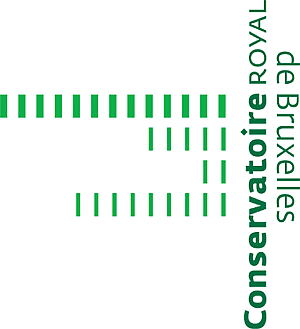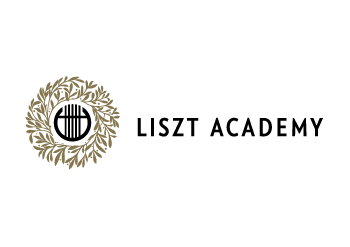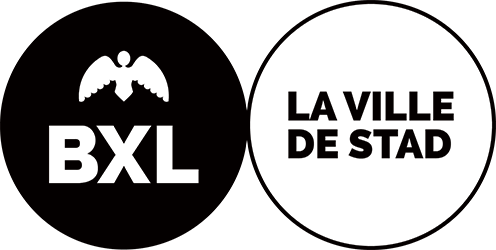Further information
-
assessment
Exam with grade E -
level
Beginner, Intermediate, Advanced, Expert -
 Completed SemesterSemesters no. 3, 4, 5, 6, (7, 8) - depending on the specialization
Completed SemesterSemesters no. 3, 4, 5, 6, (7, 8) - depending on the specialization -
How many semesters does the course last?
4 semesters (Musical Pedagogy and Religious Music specializations), 6 semesters (Musicology, Composition, Conducting) -
hours per week
1h course/week + 1h seminar/week -
 Link of the course
Link of the course -
 Target group of courseMusic theory students, beginner
Target group of courseMusic theory students, beginner
Music theory students, advanced -
 credits2 or 3
credits2 or 3 -
 Type of CourseLecture, Seminar
Type of CourseLecture, Seminar -
Degree Level
Bachelor -
 e-learning-elementsInternal archive of books and courses, as PDF.
e-learning-elementsInternal archive of books and courses, as PDF. -
Course
Mandatory -
students #
15-25 students -
Hours per year
56 -
BIBLIOGRAPHY
• Herman, Vasile – Formele muzicale ale clasicilor vienezi. Conservatorul de Muzică „Gheorghe Dima”, Cluj, 1973 • Herman, Vasile – Formă și stil în noua creație muzicală românească. Editura Muzicală, București, 1977 • Herman, Vasile – Originile și dezvoltarea formelor muzicale. Editura Muzicală, București, 1982 • Teodorescu-Ciocănea, Livia – Tratat de forme și analize muzicale. Editura Muzicală, București, 2005 • Timaru, Valentin – Compendiu de forme și analize muzicale. Brașov, Universitatea Transilvania, Facultatea de Muzică, 1997 • Timaru, Valentin – Analiza muzicală între conștiința de gen și conștiința de formă. Editura Universității din Oradea, 2003 • Timaru, Valentin – Dicționar noțional și terminologic (prolegomene ale unui curs de analiză muzicală). Editura Universității din Oradea, 2004 • Toduță, Sigismund – Formele muzicale ale Barocului în operele lui J. S. Bach. Editura Muzicală, București. Vol. I, Forma mică mono-, bi- și tristrofică (1969); Vol. II, 15 Invențiuni la două voci, 15 Invențiuni la trei voci (1973); Vol. III, Variațiunea, Rondo-ul (1978). • Vasiliu, Laura – Intrepătrunderea principiilor de formă, Curs de analiză muzicală, Editura Artes, 2007, - Articularea şi dramaturgia formei muzicale în epoca modernă (1900-1920), Ed. ARTES, Iaşi, 2002 • Balan, Mihaela-Georgiana – Limbaj, structură, semantică muzicală în Sonatele pentru pian ale compozitorilor ruși din prima jumătate a secolului al XX-lea, Editura Muzicală, București, 2022 -
ONLINE CATALOGUE
WITH CONTENTS -
evaluation grid
-
evaluation grid
and document - Document
Teacher(s)
Mihaela-Georgiana Balan
current position
Lecturer PhD
Institution
National University of Arts George Enescu IASI
Be a part of our european project !
This European project (KA 203 Strategic Partnership) created by Salvatore Gioveni promotes cross-border collaboration in the field of Music Theory through sharing knowledge and transferring pedagogical innovation. It thus responds to a lack of centralised source and framework to deepen reflection by means of cross-disciplinary study at European and international level.
There is a significant wealth of educational practices from one country to another in this sector, especially in terms of harmonic musical notation and analysis. However, HMEI's are facing the nonexistence of a European network for pedagogical staff in Music Theory so far. To improve the situation, the project will among other things develop several intellectual outputs such as Online Platform (IO 1), an EU Bibliography (IO 2), a Repository Courses (IO 3), a Multilingual Glossary (IO 4) and an Exchange Online Learning Platform.
Besides the Conservatoire royal de Bruxelles as leader and manager of the project, the following partner institutions are involved: Music Academy S. Moniuszki Gdańsk (Gdańsk, Poland), F. Liszt Academy of Music Budapest (Budapest, Hungary), Estonian Academy for Music and Theatre (Tallinn, Estonia), HfMTh "Felix Mendelssohn Bartholdy" (Leipzig, Germany).
 | 2025
| 2025








